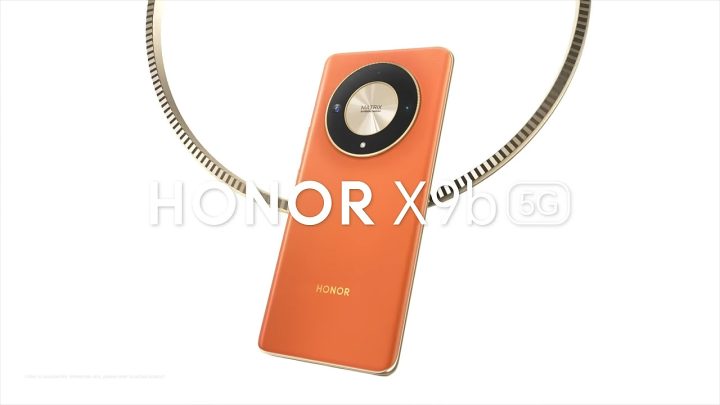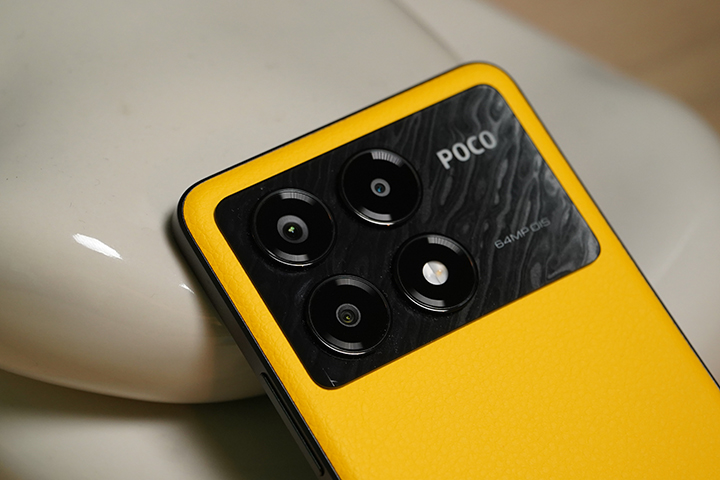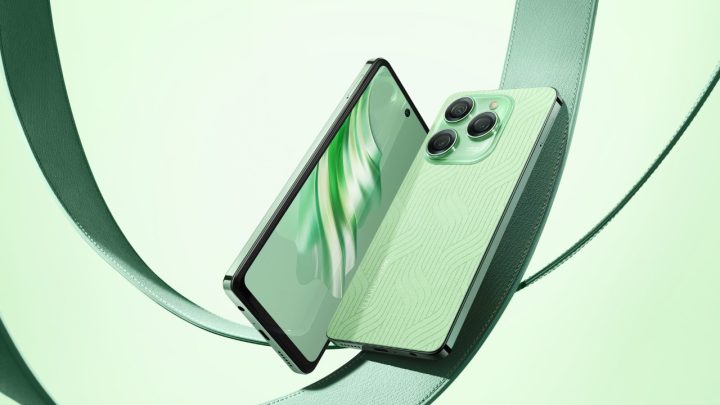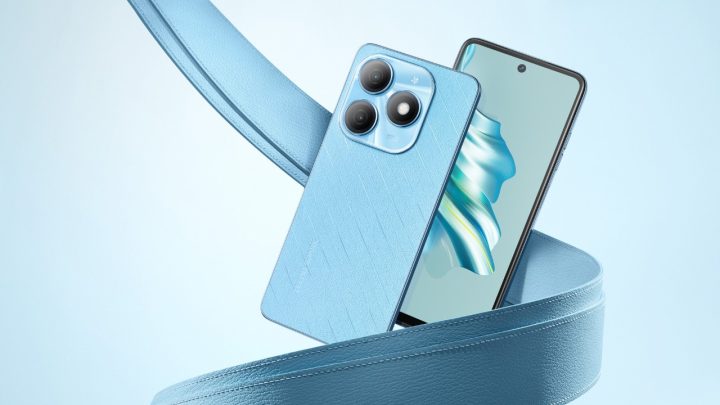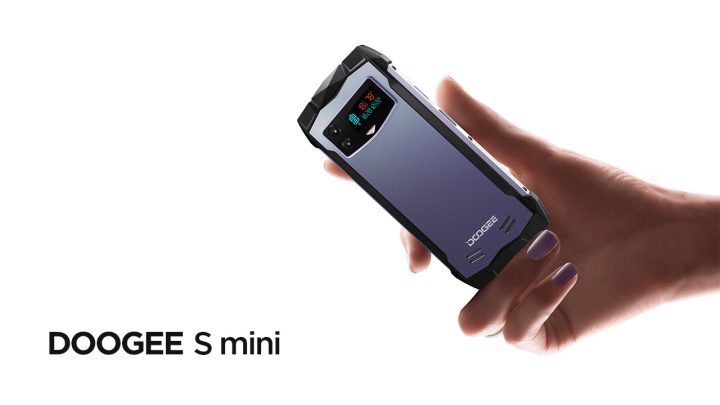There’s your flagship phone category, and then, there’s also the sub-flagship phone category. Phones of this class are usually much more affordable and yet offer impressive performance close to that of their flagship counterparts.
Two of the latest sub-flagship phones that have made their way to the Philippines are the Samsung Galaxy S24 FE and the Xiaomi 14T Pro.

While they are both priced at under PHP 40,000, you might be surprised on how one can offer so much more than the other at similar price points.
So today, we’re going to take a closer look at those differences and see which one is the better pick between the two in this comparison review.
Table of Contents
Design and Construction
Clearly, both models carry the same DNA as the flagship ones, especially in terms of design.

Starting with the Galaxy S24 FE, it sports the signature Galaxy look with those left-aligned camera rings, flat aluminum frame, and glass back. Speaking of the back panel, it gets a Gorilla Glass Victus+ on top, which is nice, and serves as an added layer of protection against scratches.

However, since the glass back comes in a high glossy finish, expect it to be a fingerprint magnet. The camera outlines are also color-matched with the frame, fully showcasing the Galaxy S24 lineup’s aesthetic.
I know, I’ve said this before in one of our comparison reviews that this repetitive design of Galaxy phones kinda gets boring when being compared with other phones. The thing is, in a way, this is a win for Samsung having been successfully establishing its own iconic design that anyone can easily recognize.

On the other hand, the Xiaomi 14T Pro also retained the look of the flagship siblings, but not entirely. As you can see, the huge camera bump from the Xiaomi 14 is gone and what remained here on the 14T Pro are the four camera rings — that are also color-matched — placed on top of a thinner square module.

This makes it visually slender on the outside, and hard to miss is the Leica moniker in between those camera rings.
It also gets a premium build with aluminum alloy frame and glass back, though Xiaomi did not mention any glass protection from the back nor at the front. The good thing is that the back comes in a matte finish, so smudges won’t be much of a problem.
Zooming into the details, you can see that there’s a subtle curvature on the edges of its back panel making it a bit more comfortable to hold. The power button has got some texture on it and along with the volume rocker, they are color matched too.

To be frank with you, this kind of design highly reminds me of the POCO F6 Pro. Don’t get me wrong, the design for the 14T Pro is nice and it’s even better than last year’s 13T Pro. It’s also nice that a sub-brand like POCO gets some love when it comes to ‘premium’ looks.
Furthermore, both models get an IP68 rating for protection against dust and accidental submersion to water.

Design-wise, I feel like both are just as visually striking as their flagship counterparts. There are no major cutbacks to be had, and I appreciate the fact that both are really aiming for that complete flagship experience at least in terms of build quality.
Features such as water resistance and durable builds with a mix of metal and glass surely make them both deserve a point this round.
Display, Multimedia, and Biometrics
Moving over to the display, this is where we see both phones start to cut corners.
In particular, both of them don’t use LTPO panels — this is a feature you would typically see in flagship models, and… they just don’t have it.

Basically, what LTPO does is automatically adjust the frame rate as low as 1- to 10Hz to save some power depending on what’s happening on the screen.
As for specs, the Galaxy S24 FE sports a 6.7-inch Full HD+ Dynamic AMOLED 2X display running at 120Hz refresh rate. One clear advantage for the S24 FE is the added Gorilla Glass Victus+ just like from the back.

However, taking a closer look at the Galaxy S24 FE’s display, it is indeed a bit of a downgrade, and I’m talking about those bezels. Unlike the rest of the Galaxy S24 Series with uniform, slim bezels, the S24 FE has relatively thicker borders, especially at the chin.
Sure, it is a minor letdown, but you can just easily slap a case on it, and then it won’t be much noticeable.
In contrast, the Xiaomi 14T Pro boasts a bit better display: it’s a 6.67-inch 1.5K AMOLED screen with a buttery smooth 144Hz refresh rate.
The only thing it lacks is having some sort of screen protection. Xiaomi did not specify any added glass for scratch resistance, so you might want to get its own tempered glass and a protective case as well.

As for viewing experience, despite the gap in screen resolution and refresh rate, both definitely deliver with vivid colors, satisfying deep blacks, and smooth animations. Audio quality is also commendable for both devices rocking dual stereo speakers that output crisp and well-balanced sound.

Xiaomi 14T Pro (left) and Galaxy S24 FE (right)
However, only the Xiaomi 14T Pro gets a more immersive video thanks to its support for Dolby Vision and Dolby Atmos. The S24 FE is only left with the latter for immersive audio.
For biometrics, both do have an under-display fingerprint sensor, but it’s only of the optical variety which is okay to save some costs.
With that, I’ll give this round to the Xiaomi 14T Pro due to its higher resolution and slightly smoother display.
Performance and Benchmarks
Now, onto one of the most crucial parts of this comparison, the phones’ performance.
Powering the Galaxy S24 FE is Samsung’s in-house Exynos 2400e. I will stop you right there, thinking that this is a garbage chipset, but it’s certainly not so. It is built on a 4-nanometer process with deca-core architecture (that’s 10 CPU cores for you) and can run up to 3.1 GHz clock speed.

Yes, it is indeed a new flagship chip from Samsung, and it is as good as with the competition. The Xiaomi 14T Pro is equipped with the MediaTek Dimensity 9300+ — also a 4-nanometer chip, octa-core, and clocked at slightly higher speed at 3.4 GHz.

In our benchmark tests, the 14T Pro did have a higher score in AnTuTu at almost 2 million points as compared to the S24 FE’s 1.4 million, but that’s about it.
In other tests such as Geekbench 6, the difference is not that big, in fact the S24 FE even managed to overtake the 14T Pro in Geekbench GPU and PCMark performance tests, as you can see below:
| Benchmark | Samsung Galaxy S24 FE | Xiaomi 14T Pro |
| Chipset | Samsung Exynos 2400e | MediaTek Dimensity 9300+ |
| AnTuTu V10 | 1,497,518 | 1,965,922 |
| AnTuTu Storage | 64,995 | – |
| S.Read Speed | 1,837 MB/s | 3,783 MB/s |
| S.Write Speed | 670.3 MB/s | 3,511 MB/s |
| 3DMark Wild Life | MAXED OUT | – |
| Geekbench 6 Single-Core | 2,082 | 2,115 |
| Geekbench 6 CPU Multi-Core | 6,464 | 6,501 |
| Geekbench 6 GPU OpenCL | 13,906 | 13,011 |
| Geekbench 6 GPU Vulkan | 14,739 | 14,560 |
| PC Mark Work 3.0 performance | 17,844 | 15,577 |
I figured that a huge part of the S24 FE’s better GPU performance is because it uses a graphics chip from AMD called the Xclipse 940 that is built on AMD’s RDNA 3 architecture. In contrast, the 14T Pro uses Arm Immortalis-G720 MC12 GPU.
In real world use cases however, you will barely feel any difference. Both phones can easily handle light to heavier tasks, especially gaming.
We haven’t had any issues playing graphic-intensive titles like Genshin Impact in high graphics settings. Except, the S24 FE tends to heat up faster than the 14T Pro and that’s because of its so-called 3D IceLoop heat dissipation system.
Another advantage of the 14T Pro is the addition of a dedicated AI chip (the MediaTek NPU 790) that should make its overall AI processing much faster.
Interestingly, the RAM and storage capacities of the 14T Pro are miles ahead, sporting faster 12GB of LPDDR5x RAM and 256GB of UFS 4.0 storage for the base option. The S24 FE is left with only 8GB of RAM across all variants and 128GB base model.
Going back to our benchmarks, the 14T Pro indeed showed faster read and write speeds in the AnTuTu Storage test. That being said, the Xiaomi 14T Pro secures another point this round thanks to its better chipset hardware under the hood.
Cameras
Yet another crucial point of comparison is the camera department. This is where we see a starker contrast between the two models at least on paper.
The Galaxy S24 FE sports a triple rear setup led by a 50-megapixel main sensor with optical image stabilization or OIS, an 8-megapixel telephoto, a 12-megapixel ultrawide lens, and a 10-megapixel selfie camera.

Meanwhile, the Xiaomi 14T Pro features a better triple rear setup with a 50-megapixel main camera with OIS, another 50-megapixel lens for telephotos, a 12-megapixel ultrawide, and a 32-megapixel selfie shooter. It must be noted that the 14T Pro also gets Leica tuning.

Setting the technicalities aside, as seen in our sample shots from their respective reviews below, both phones can definitely output nice images.
The Xiaomi phone captures a bit more dramatic photos, but I like the natural-looking images on the S24 FE as well. Images from both are also sharp and offer good dynamic range.
For videos though, they’re mid at best. Both are able to capture up to 8K at 30 fps. On the S24 FE, while video quality is good enough, it often has soft detail but performs decently in low light scenarios with more vivid colors.
The Xiaomi 14T offers good color saturation, but often sharpens the image a bit too much. It does perform better in low light with more natural looking colors.
Overall, they’re both capable shooters regardless of the difference in megapixel count. Because like I always say, higher megapixel count does not lead to better image quality.
With that, I’ll give both phones a point this round.
Battery Life
Battery life is something the Xiaomi 14T Pro should excel at with its larger 5000mAh unit, but surprisingly, it didn’t. In our PCMark Work 3.0 battery life test, the phone achieved a decent 14 hours and 29 minutes.
That’s about two hours less than the Galaxy S24 FE that managed to get 16 hours and 18 minutes of runtime in the same test, despite having a smaller 4700mAh battery.

The Xiaomi 14T Pro counters though with blazing fast charging speeds at 120W of wired and 50W of wireless charging. The Galaxy S24 FE is left with a measly 25W of wired and 15W of wireless charging
Personally, I would prefer a phone that’s able to recharge at much faster speed. So, the Xiaomi 14T Pro now gets a three-point lead.
Connectivity and Other Features
On the software side of things, both run Android 14 out of the box with the Galaxy S24 FE skinned with One UI 6.1 and the Xiaomi 14T Pro running HyperOS.

Both are fairly good software, and to be honest, I like them both. Samsung’s One UI is arguably the best-looking skin while Xiaomi’s HyperOS takes heavy inspiration from iOS — which still looks nice by the way.
Each Android skin has their own charms, that’s true, and your preferences will determine which has better implementation of Android.
Now, if you’re wondering about AI, then I’m happy to report that both models come with their own suite of AI-powered features. For the Galaxy S24 FE, it comes with Galaxy AI and the Xiaomi 14T Pro has Xiaomi Advanced AI.

The key features are mostly the same with stuff like AI Interpreter, Circle to Search, and AI Eraser among others. Although, it seems Galaxy AI offers much more to the table than Xiaomi does.

Connectivity-wise, both have all the essentials including 5G, Wi-Fi 6, and NFC. The Xiaomi 14T Pro does have an IR blaster as a convenient remote control for your appliances, but the Galaxy S24 FE does you one better: Samsung DeX. This means you can use the phone as a convenient PC-like desktop experience when you connect it to a display monitor over HDMI or even wirelessly.
Thus, it’s best to give the point this round to the Galaxy S24 FE offering a wider suite of AI features and of course, Samsung DeX.
Which one should you get?
And now, we answer the question, which is the better pick?
It’s clear as day that the Xiaomi 14T Pro dominated this comparison review with better RAM and storage config, a better display, and faster charging capabilities.

What may seal the deal is its relatively lower price, starting at PHP 37,999 for the base 12+256GB variant.
On the other hand, the Samsung Galaxy S24 FE is costlier at PHP 39,990. For the price, it offers a stronger build, longer battery life, and a more feature-packed software.

However, possibly a major drawback is the phone’s unfavorable RAM and storage configurations for its base variant having only 8+128GB trim.
As of November 3, Samsung Philippines at least through their website offers the 256GB option for that same price. Perhaps, the Galaxy S24 FE will likely be a good deal only when it goes on sale.
Samsung Galaxy S24 FE vs Xiaomi 14T Pro specs
| Samsung Galaxy S24 FE | Xiaomi 14T Pro |
|---|---|
| PHP 39,990 (8+128GB) PHP 44,990 (8+256GB) PHP 53,990 (8+512GB) | PHP 37,999 (12+256GB) PHP 39,999 (12+512GB) PHP 41,999 (12+1TB) |
| 6.7-inch FHD+ Dynamic AMOLED 2X display | 6.67-inch 1.5K AMOLED display |
| 1080 x 2340 pixels, 120Hz refresh | 2712 x 1220 pixels, 144Hz refresh, 446 ppi |
| 1900 nits peak brightness (HDR) | 4000 nits peak brightness (HDR) |
| Corning Gorilla Glass Victus+ (back and front) | - |
| Samsung Exynos 2400e | MediaTek Dimensity 9300+ |
| 4nm, 10-cores, up to 3.1GHz | 4nm, 8-cores, up to 3.4GHz |
| Features Galaxy AI | MediaTek NPU 790 | features Advanced AI |
| 8GB RAM | 12GB LPDDR5x RAM |
| 128GB, 256GB, 512 storage | 512GB, 1TB UFS 4.0 storage |
| Triple rear cameras: | Triple rear cameras (co-engineered with Leica) |
| - 50MP f/1.8 main, OIS | - 50MP f/1.6 Light Fusion 900 main, OIS |
| - 8MP f/2.4 telephoto, 3x optical zoom | - 50MP f/2.0 telephoto (60mm) |
| - 12MP f/2.2 ultrawide | - 12MP f/2.2 ultrawide, 120˚ FoV |
| 10MP f/2.4 selfie shooter (hole punch notch) | 32MP f/2.0 selfie shooter (hole punch notch) |
| Dual nano-SIM (supports eSIM) | Dual nano-SIM (supports eSIM) |
| 5G, 4G LTE | 5G, 4G LTE |
| Wi-Fi 6 | Wi-Fi 6 |
| Bluetooth 5.3 | Bluetooth 5.4 |
| GPS, GLONASS, Beidou, Galileo, NavIC, QZSS | GPS, Galileo, GLONASS, Beidou, NavIC |
| USB Type-C (USB 3.2 Gen 1) | USB Type-C |
| NFC | NFC |
| Under-display fingerprint sensor | Under-display fingerprint sensor |
| IP68 dust and water resistance | IP68 dust and water resistance |
| Dual stereo speakers, Samsung DeX | Dual stereo speakers, Dolby Atmos/ Vision, IR blaster |
| One UI 6.1, Android 14 | Xiaomi HyperOS, Android 14 |
| 4700mAh battery | 5000mAh battery |
| 25W charging (wired) | 120W charging (wired) |
| 15W wireless | 50W wireless |
| 162.0 x 77.3 x 8.0 mm | 160.4 x 75.1 x 8.39 mm |
| 213g | 209g |
| Blue, Graphite, Mint (colorways) | Titan Black, Titan Blue, Titan Gray (colorways) |







